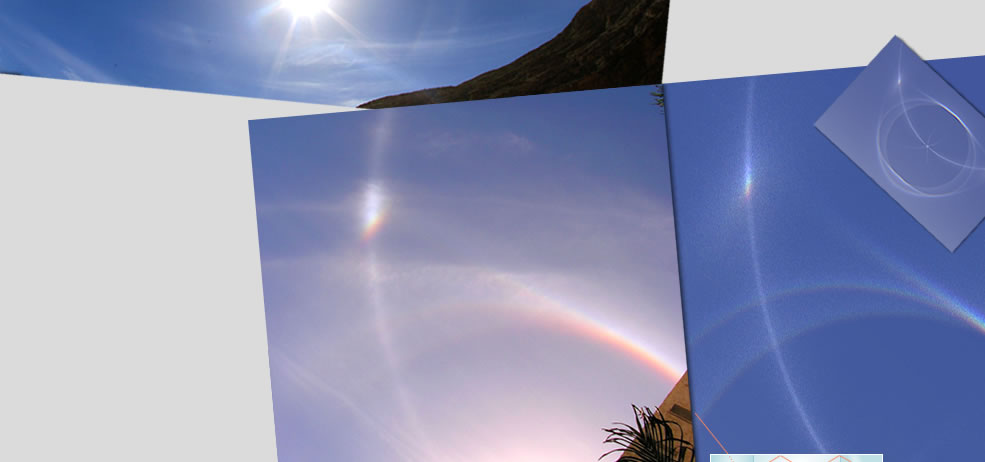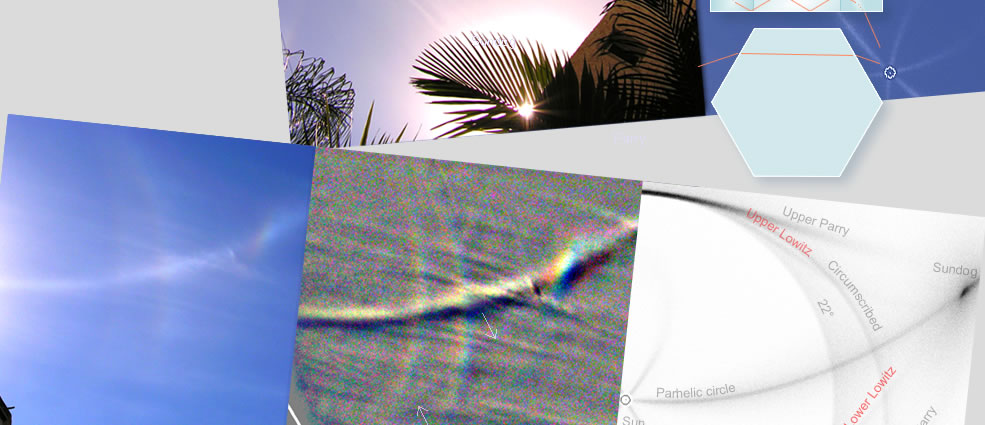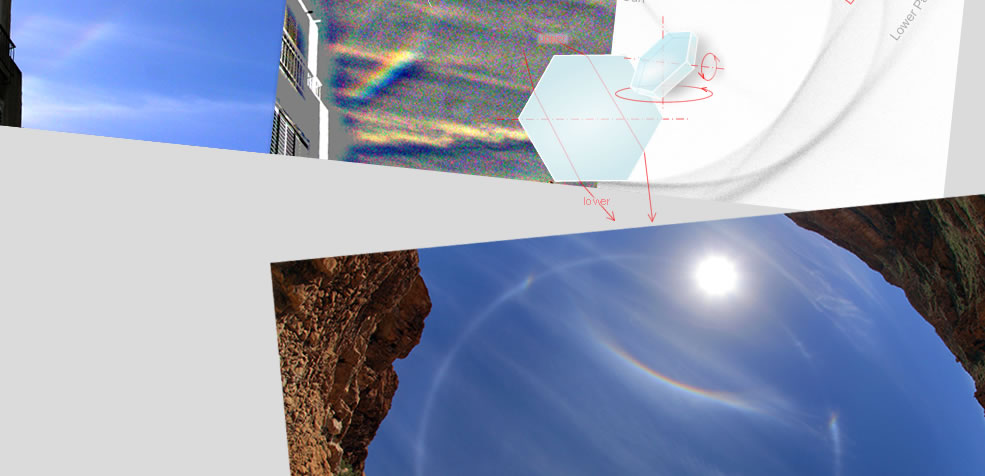| Israel ~ March 7, 2007 |
 |
 |
 |
 |
 |
|
|||||||
| |||||||
| Left: The display from the Dead Sea by Koby Harati (photography) with the camera looking up almost to the zenith. ©Koby Harati, shown with permission. |

| The Israel display was seen from sites
40 miles apart and for several hours. The high noon sun of 50+
degrees altitude produced unusual halos and gave the lie to notions
that outstanding displays can only be seen in cold weather or Polar
regions. At times a complete parhelic circle ringed the sky cutting through the sun, a 22 degree halo and a circumscribed halo. Sundogs sat far from the sun. Unusual Parry arcs were seen and even a rare Lowitz arc. |
Right: Pennina
Neumann captured the left hand sundog far along an intense parhelic
circle and beyond the 22° and circumscribed halos. ©Pennina
Nuemann, shown with permission.
|
Above: Another
image by Pennina Neumann showing a high sun Parry arc and a rare
and elusive Lowitz arc.
|
| Right: Another view by Koby Harati with a complete parhelic circle and, near the top, upper and lower Parry arcs. |
| Right: The
end of the day by Pennina Neumann. Parry oriented crystals persisted in the sky to yield (far right) a more often seen low-sun Parry arc. Parry orientated crystals seem most improbable but this is balanced by their great efficiency in producing halos. Not many of them are needed compared with other crystal orientations. |